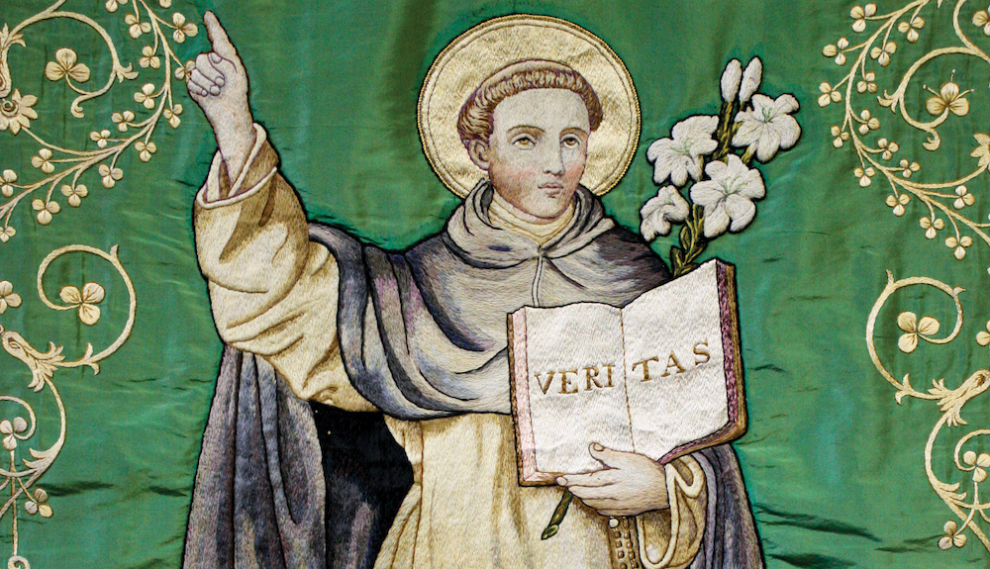This is one article in a three-part series on pilgrim saints, also including: Work for justice with St. Katharine Drexel and Find God in creation with St. Cuthbert.
Spring sunshine poured through the train window as I traveled past fields of lavender and sunflowers, the gently rolling Pyrenees mountains in the distance. A college sophomore during a semester abroad in France, I wrote in my journal on that trip of an unexplainable consolation I felt in Languedoc and Provence. So far from my native Wisconsin, I felt strangely at home in the south of France.
Years later as a Dominican novice, I recalled that feeling and realized I had been in the land where St. Dominic de Guzmán had walked. My teenaged backpacker travels and my Dominican vocation made sense when I remembered the “fit” I felt where Dominic had preached the gospel and established a community some 800 years before.
In contrast to previous religious communities up until that point, Dominic (and his contemporary, Francis of Assisi) practiced itinerancy. Born in Caleruega, Spain in 1170, Dominic journeyed as a young adult across Europe, which changed the course of his life. With his bishop friend Diego, Dominic traveled to help arrange a royal wedding. Together they encountered the dualistic, body-denying Cathar heresy, which was widespread in southwestern France.
Although the royal wedding never ended up happening, the journey opened Dominic’s eyes to the need for authentic, well-reasoned, inspired preaching made credible through simple living of a common life. Dominic went on to found a community of women religious in 1206 and then a community of preaching friars who shared his vision in 1216.
Dominic’s example reminds me to remain open to surprises on the journey when my plans are thwarted. Remember, Dominic and Diego never achieved what they set out to accomplish. Am I willing to accept interruptions—a snowstorm, a delayed bus, a cancelled flight, or a general strike of transit workers—as possibilities for grace? More times than I can count, these frustrations have opened the door for unanticipated blessings.
There is a famous story of Dominic arguing with a Cathar innkeeper all night. I imagine the two of them, animated and impassioned, discussing their beliefs until the wee hours of the morning. The story makes me recall late nights as a volunteer for the Jesuit Volunteer Corps in Nicaragua debating politics and trade agreements, conversations over tea with peacemakers in Belfast in Northern Ireland, and experiences in the classroom talking about faith and justice with students from around the world. Dominic’s deep engagement with and passionate love for people prefigured what Pope Francis calls a “culture of encounter.”
One of Dominic’s Nine Ways of Prayer was praying as he walked. Prayer for him didn’t have to be in a chapel—it could be out in creation amid the daily work of ministry. My favorite artistic renderings of Dominic make me imagine the spring in his step, contemplating God’s goodness as he walked through the beautiful landscape of southern France on his preaching journeys. He appears joyful and alert, a stance I seek in my life whether I’m traveling or at home.
Since my backpacker travels, Dominic has faithfully accompanied me in both my spiritual and geographical journeying. His willingness to be interrupted, his passionate engagement with others, and his body prayer continue to guide me in my travels today—whether I’m flying across the country or walking down the street.
This article also appears in the June 2020 issue of U.S. Catholic (Vol. 85, No. 5, pages 27-28). Click here to subscribe to the magazine.
Image: Flickr.com/Fr. Lawrence Lew, O.P.













Add comment